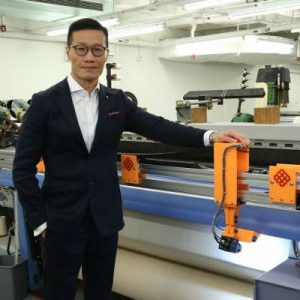Hong Kong Researchers Use AI to Detect Textile Defects
Researchers at Hong Kong Polytechnic University (PolyU) use artificial intelligence (AI) technology to detect textile defects.

HONG KONG-Researchers at Hong Kong Polytechnic University (PolyU) use artificial intelligence (AI) technology to detect textile defects. UK-based publication the Engineer reports that the researchers installed machine vision on looms to develop a detection system.
The innovative system, known as WiseEye detects as much as 40 fabric defects and has a reported accuracy resolution of as much as .1mm per pixel. This accuracy, the Engineer points out, reduces the chances of manufacturing substandard fabrics by an estimated 90 percent. Most current textile inspection consists of humans verifying fabric by hand and eye. And because the process is so detail-intensive, the potential for inconsistencies and error is high due to fatigue.
Research leader professor Calvin Wong of PolyU’s Institute of Textiles and Clothing tells the publication that the two-decade mission of refining the automation process has been “a challenging and unaccomplished mission.” Through the combination of AI, big data, and deep learning technologies, Wong cites WiseEye as not only a technological breakthrough for the industry but a system that “marks a significant milestone in the quality control automation for the traditional textile industry.”
The researchers tested the WiseEye system over a six-month period in real-life manufacturing scenarios and found a 90-percent reduction in loss compared to human inspection. While the system currently works with most types of fabrics and solid colors, Wong tells the Engineer that researchers hope to work on more challenging patterns such as stripes and checks, with a goal of inspecting all common fabric types within five years.
To see the full report from PolyU, visit https://www.polyu.edu.hk/web/en/media/media_releases/index_id_6584.html.